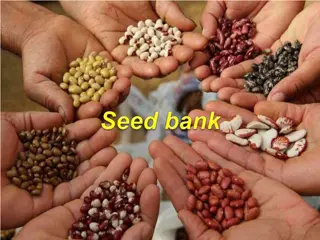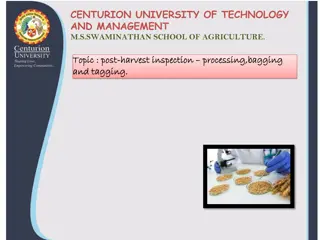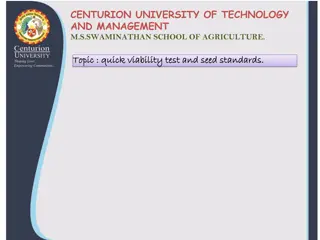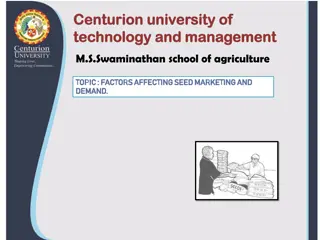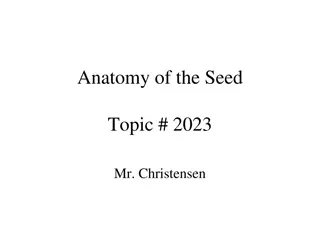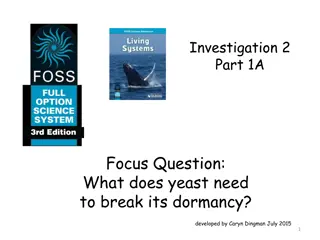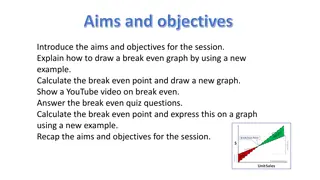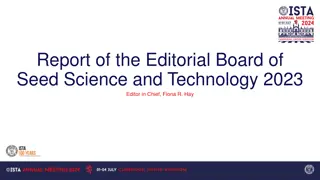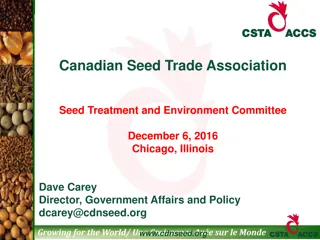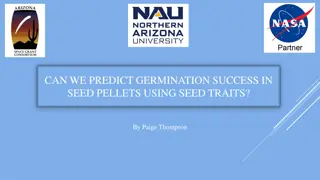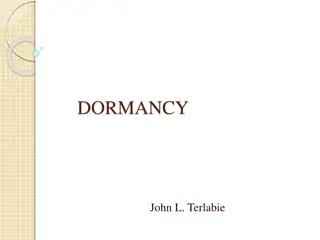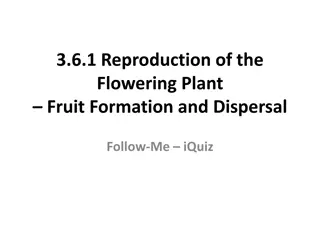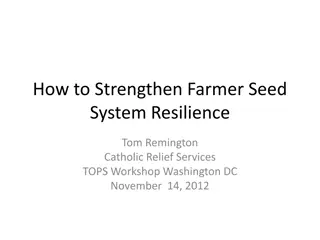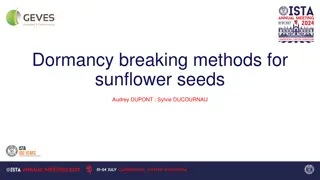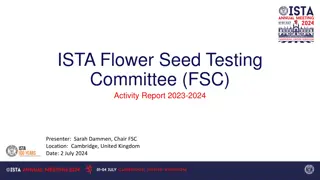Understanding Seed Dormancy and Ways to Break it
Seed dormancy is a crucial aspect of plant growth, where seeds remain inactive and do not germinate even under favorable conditions. Various reasons contribute to seed dormancy, such as light, temperature, and hard seed coats. Different types of dormancy like innate, enforced, and induced are explained along with treatments to break seed dormancy, including seed coat treatments, embryo treatments like stratification, and chemical treatments. Understanding these processes is essential for successful seed germination.
Uploaded on Jul 17, 2024 | 1 Views
Download Presentation

Please find below an Image/Link to download the presentation.
The content on the website is provided AS IS for your information and personal use only. It may not be sold, licensed, or shared on other websites without obtaining consent from the author. Download presentation by click this link. If you encounter any issues during the download, it is possible that the publisher has removed the file from their server.
E N D
Presentation Transcript
Unit 5: Plant Physiological Processes Topic: Dormancy and Photoperiodism B.Ed (Hons) Secondary Semester: III Subject: Biology III Minor Course Title: Plant Physiology and Ecology Represented By: Ms Sidra Younis Department of Education (Planning and Development) Lahore College For Women University, Lahore
Seed Dormancy Seed dormancy can be defined as the state or a condition in which seeds are prevented from germinating even under the favourable environmental conditions for germination including, temperature, water, light, gas, seed coats, and other mechanical restrictions. The main reason behind these conditions is that they require a period of rest before being capable of germination. These conditions may vary from days to months and even years. These conditions are the combination of light, water, heat, gases, seed coats and hormone structures.
Reasons of Seed Dormancy Listed below are the few reasons for the seed dormancy. Light Temperature Hard Seed Coat Period after ripening Germination inhibitors Immaturity of the seed embryo Impermeability of seed coat to water Impermeability of seed coat to oxygen Mechanically resistant seed coat Presence of high concentrate solutes
Types of Seed Dormancy Innate dormancy It is the condition of seeds which is incapable of germination even if conditions suitable for seedling growth are supplied. This inability to germinate may be due in certain species to the embryo being immature at the time of dispersal. Enforced dormancy Enforced dormancy It is the condition of seeds which is incapable of germination due to an environmental restraint which includes, an adequate amount of moisture, oxygen, light and a suitable temperature. Induced dormancy Induced dormancy This type of seed dormancy occurs when the seed has imbibed water, but has been placed under extremely unfavourable conditions for germination. Finally, seed fails to germinate even under more favourable conditions. Innate dormancy
Treatment to break Seed Dormancy Seed coat treatment Seed coat treatment These treatments make a hard seed coat permeable to water or gases either by softening or cracking. This process is called scarification. The treatment can be either chemical or physical in nature. Embryo treatments Embryo treatments Stratification: Stratification: The incubation of seeds at an appropriate low temperature over a moist layer before transferring to a temperature suitable for germination. High High- -temperature treatment: temperature treatment: Incubation at 40-50 C for a few hours to a few days may have an effect in overcoming dormancy in some species. For instance, rice seeds treated with hot water at 40 C for at least 4 hours. Chemical treatments Chemical treatments Plant growth regulators or other chemicals can be used in induced germination growth regulators.
Importance of Seed Dormancy It follows the storage of seeds for later use by animals and man. It helps in the dispersal of the seeds through the unfavourable environment. Dormancy induced by the inhibitors present in the seed coats is highly useful to desert plants. Allows the seeds to continue to be in suspended animation without any harm during cold or high summer temperature and even under drought conditions. Dormancy helps seeds to remain alive in the soil for several years and provides a continuous source of new plants, even when all the mature plants of the area have died down due to natural disasters.
Photoperiodism Photoperiodism Definition: Definition: Response of a plant to a relative lengths of light and darkness within 24 hours is known as photoperiodism. Photoperiodic Classification of Plants Photoperiodic Classification of Plants SHORT DAY PLANTS SHORT DAY PLANTS Short-day plants flower when daylight is less than a critical length. They flower in the late summer, fall, or early winter. For example, chrysanthemums, poinsettias, some soybeans. LONG DAY PLANTS LONG DAY PLANTS - - DEFINITION DEFINITION Long-day plants flower when daylight is more than the critical day length. They flower in the spring and early summer. For example, radishes, lettuces, irises, many cereal varieties.
DAY NEUTRAL PLANTS DAY NEUTRAL PLANTS Day-neutral plants do not flower in response to daylight changes. They flower when they reach a particular stage of maturity or because of some other cue like temperature or water, etc. This is the most common kind of flowering pattern. For example, rice, dandelions, tomatoes, etc. SHORT SHORT- -LONG DAY PLANT LONG DAY PLANT Plants that initiate flower buds only when a sequence of short days are followed by long days. LONG LONG- -SHORT DAY PLANTS SHORT DAY PLANTS Plants that initiate flower buds only when a sequence of long days is followed by short days.
INTERMEDIATE DAY PLANTS INTERMEDIATE DAY PLANTS Flower in response to a narrow range of photoperiods. SHORT NIGHT, LONG NIGHT PLANTS SHORT NIGHT, LONG NIGHT PLANTS Long night plants Long night plants flower when daylight is less than a critical length. They flower in the late summer, fall, or early winter. For example, chrysanthemums, poinsettias, some soybeans. Short night plant Short night plants flower when daylight is more than the critical day length. They flower in the spring and early summer. For example, radishes, lettuces, irises, many cereal varieties.




